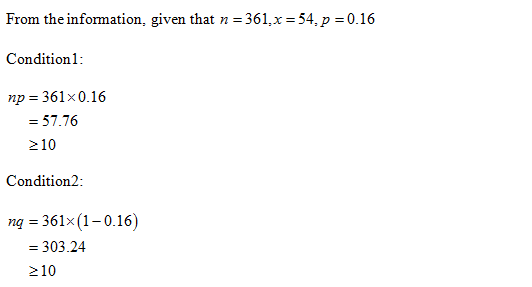Only about 16% of all people can wiggle their ears. Is this percent lower for millionaires? Of the 361 millionaires surveyed, 54 could wiggle their ears. What can be concluded at the a = 0.01 level of significance? a. For this study, we should use Select an answer b. The null and alternative hypotheses would be: Ho: ? Select an answer (please enter a decimal) H1: ? Select an answer ♥ (Please enter a decimal) c. The test statistic ? v = (please show your answer to 3 decimal places.)
Only about 16% of all people can wiggle their ears. Is this percent lower for millionaires? Of the 361 millionaires surveyed, 54 could wiggle their ears. What can be concluded at the a = 0.01 level of significance? a. For this study, we should use Select an answer b. The null and alternative hypotheses would be: Ho: ? Select an answer (please enter a decimal) H1: ? Select an answer ♥ (Please enter a decimal) c. The test statistic ? v = (please show your answer to 3 decimal places.)
MATLAB: An Introduction with Applications
6th Edition
ISBN:9781119256830
Author:Amos Gilat
Publisher:Amos Gilat
Chapter1: Starting With Matlab
Section: Chapter Questions
Problem 1P
Related questions
Question

Transcribed Image Text:Only about 16% of all people can wiggle their ears. Is this percent lower for millionaires? Of the 361
millionaires surveyed, 54 could wiggle their ears. What can be concluded at the a = 0.01 level of
significance?
a. For this study, we should use Select an answer
b. The null and alternative hypotheses would be:
Но: ?
Select an answer
(please enter a decimal)
H: ?v Select an answer
(Please enter a decimal)
c. The test statistic ? v =
(please show your answer to 3 decimal places.)
С.
d. The p-value =
e. The p-value is ?v a
f. Based on this, we should Select an answer
(Please show your answer to 3 decimal places.)
|the null hypothesis.
g. Thus, the final conclusion is that ...
O The data suggest the population proportion is not significantly lower than 16% at a = 0.01, so
there is statistically significant evidence to conclude that the population proportion of
millionaires who can wiggle their ears is equal to 16%.
The data suggest the populaton proportion is significantly lower than 16% at a = 0.01, so there
is statistically significant evidence to conclude that the population proportion of millionaires
who can wiggle their ears is lower than 16%.
O The data suggest the population proportion is not significantly lower than 16% at a = 0.01, so
there is statistically insignificant evidence to conclude that the population proportion of
millionaires who can wiggle their ears is lower than 16%.
Expert Solution
Step 1
Since you have posted a question with multiple sub-parts, we will solve first three sub-
parts for you. To get remaining sub-part solved please repost the complete question and
mention the sub-parts to be solved
(a)
Determine the type of study used.
The type of the study used is determined below as follows:

Thus, the type of study used here is “z-test for a single proportion” of voters who prefer democratic candidate.
Correct option: z-test for a population proportion.
Step by step
Solved in 3 steps with 3 images

Recommended textbooks for you

MATLAB: An Introduction with Applications
Statistics
ISBN:
9781119256830
Author:
Amos Gilat
Publisher:
John Wiley & Sons Inc

Probability and Statistics for Engineering and th…
Statistics
ISBN:
9781305251809
Author:
Jay L. Devore
Publisher:
Cengage Learning

Statistics for The Behavioral Sciences (MindTap C…
Statistics
ISBN:
9781305504912
Author:
Frederick J Gravetter, Larry B. Wallnau
Publisher:
Cengage Learning

MATLAB: An Introduction with Applications
Statistics
ISBN:
9781119256830
Author:
Amos Gilat
Publisher:
John Wiley & Sons Inc

Probability and Statistics for Engineering and th…
Statistics
ISBN:
9781305251809
Author:
Jay L. Devore
Publisher:
Cengage Learning

Statistics for The Behavioral Sciences (MindTap C…
Statistics
ISBN:
9781305504912
Author:
Frederick J Gravetter, Larry B. Wallnau
Publisher:
Cengage Learning

Elementary Statistics: Picturing the World (7th E…
Statistics
ISBN:
9780134683416
Author:
Ron Larson, Betsy Farber
Publisher:
PEARSON

The Basic Practice of Statistics
Statistics
ISBN:
9781319042578
Author:
David S. Moore, William I. Notz, Michael A. Fligner
Publisher:
W. H. Freeman

Introduction to the Practice of Statistics
Statistics
ISBN:
9781319013387
Author:
David S. Moore, George P. McCabe, Bruce A. Craig
Publisher:
W. H. Freeman